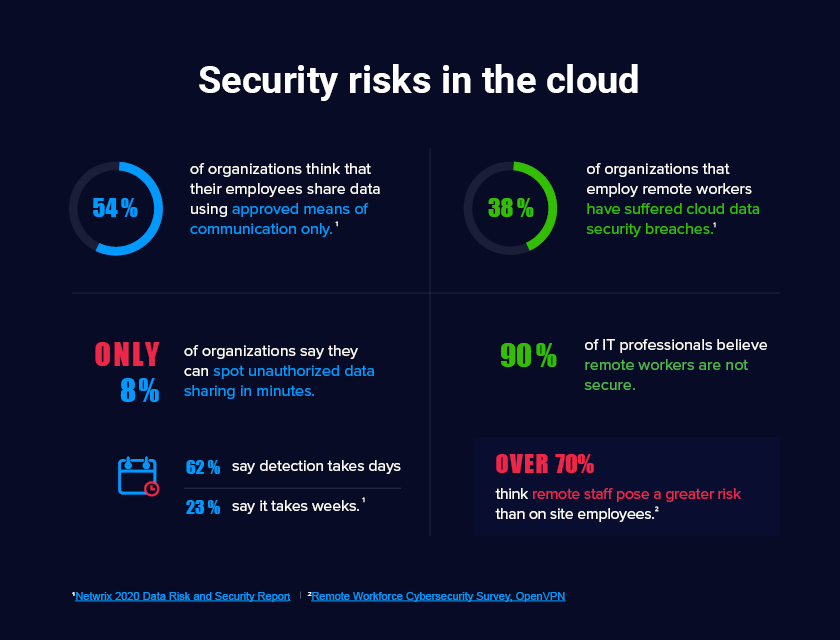What are the risks of data security?
Summary of the article: Risks of Data Security
Significant revenue loss as a result of a security breach is common. Studies show that 29% of businesses that face a data breach end up losing revenue. Of those that lost revenue, 38% experienced a loss of 20% or more. A non-functional website, for example, may cause potential customers to explore other options.
Types Of Data Security Threats:
– Malware: a type of software that is designed to harm or damage a computer system.
Four major threats in data security:
– Phishing
– Unintentional Leakage
– Malicious Insider Threat as Data Security Risk
– Implement Access Controls to Minimize Data Security Risks
Top 3 risks to IT security:
– Malware attack
– Social engineering attacks
– Software supply chain attacks
Biggest risks with data:
– Privacy and Data Protection
– Cost Management
– Unorganized Data
– Data Storage and Retention
– Incompetent Big Data Analysis
– Poor Data Quality
– Deployment Process
Types of data security:
– Confidentiality, Integrity, and Availability
Types of security threats:
– Malware
– Social engineering
– Web application exploits
– Supply chain attacks
– Denial of Service attacks
– Man-in-the-middle attacks
Three biggest data risks:
– Privacy and Data Protection
– Cost Management
– Unorganized Data
– Data Storage and Retention
– Incompetent Big Data Analysis
– Poor Data Quality
– Deployment Process
Largest threat to data security:
– Phishing Attacks
Here are ten common types of security risks and vulnerabilities:
– Malware (including fileless malware)
– Cloud security
– Phishing
– Ransomware
– Data loss
– Password attacks
– Insider threats
– DDoS
Biggest vulnerability to security data:
– Human error – When end users fall victim to phishing and other social engineering tactics, they become one of the biggest causes of vulnerabilities in security.
Five big data privacy risks:
– Lack of control over personal data
– Data breaches and leaks
– Inaccurate data
– Inadequate data security measures
– Misuse of data by third parties

What are the negative effects of data security
Significant revenue loss as a result of a security breach is common. Studies show that 29% of businesses that face a data breach end up losing revenue. Of those that lost revenue, 38% experienced a loss of 20% or more. A non-functional website, for example, may cause potential customers to explore other options.
What are the four major threats in data security
Types Of Data Security Threats
Some of these threats include malware, ransomware, phishing attacks and social engineering. Malware is a type of software that is designed to harm or damage a computer system.
Cached
What top 3 risks to data security have been identified within the organisation
4 Most Common Data Security Risks in Most BusinessesPhishing.Unintentional Leakage.Malicious Insider Threat as Data Security Risk.Implement Access Controls to Minimize Data Security Risks.Data Masking.Data Encryption to Reduce Data Security Risks.
Cached
What are the top 3 risks to IT security
The main types of information security threats are: Malware attack. Social engineering attacks. Software supply chain attacks.
Cached
What are the biggest risks with data
Major Risks & Threats come with Big DataPrivacy and Data Protection. When companies are collecting big data, then the first risk that comes with big data is data privacy.Cost Management.Unorganized Data.Data Storage and Retention.Incompetent Big Data Analysis.Poor Data Quality.Deployment Process.
What are the 3 types of data security
There are three core elements to data security that all organizations should adhere to: Confidentiality, Integrity, and Availability.
What are the six types of security threat
The main types of cybersecurity threats that companies face today include malware, social engineering, web application exploits, supply chain attacks, Denial of Service attacks, and man-in-the-middle attacks.
What are the three biggest data risks
Major Risks & Threats come with Big DataPrivacy and Data Protection. When companies are collecting big data, then the first risk that comes with big data is data privacy.Cost Management.Unorganized Data.Data Storage and Retention.Incompetent Big Data Analysis.Poor Data Quality.Deployment Process.
What is the largest threat to data security
1) Phishing Attacks
Phishing accounts for 90% of all breaches that organizations face, they've grown 65% over the last year, and they account for over $12 billion in business losses.
What are the six types of security risks
Here are ten common types of security risks and vulnerabilities, and what to do about them.Malware (including fileless malware)Cloud security.Phishing.Ransomware.Data loss.Password attacks.Insider threats.DDoS.
What is the biggest vulnerability to security data
Human error – When end users fall victim to phishing and other social engineering tactics, they become one of the biggest causes of vulnerabilities in security.
What are five big data privacy risks
What Are the Biggest Privacy Issues Associated with Big Data#1- Obstruction of Privacy Through Breaches.#2- It Becomes Near-Possible to Achieve Anonymity.#3 – Data Masking Met With Failure in a Big Data-Driven Setting.#4 – Big Data Analysis Isn't Completely Accurate.#5 – Copyrights and Patents Are Rendered Irrelevant.
What are examples of data security
An example of data security would be using encryption to prevent hackers from using your data if it's breached. Data protection refers to the creation of backups or duplication of data to protect against accidental erasure or loss.
What are three 3 security techniques that can be used to protect data
Enforcing communication via secure channels. Performing strong identity verification to ensure devices are not compromised. Limiting the use of third-party software and browsing to unsafe websites. Encrypting data on the device to protect against device compromise and theft.
What are the 7 types of security
There are essentially seven issues associated human security. These are economic security, food security, health security environmental security, personal security, community security, and political security.
What are three most common security threats and why
This article outlines the most common attack vectors and how you can arm your business against them.Malware – Surveillanceware and Ransomware.Phishing – Email and mobile.Threat Actors – Hackers.
What are the 3 A’s of data security
Authentication, Authorization, and Accounting (AAA) is a three-process framework used to manage user access, enforce user policies and privileges, and measure the consumption of network resources.
What are the main types of threat to data
Malware. Malware is also known as malicious code or malicious software.Ransomware. Ransomware prevents or limits users from accessing their system via malware.Distributed Denial of Service (DDoS) Attacks.Spam & Phishing.Corporate Account Takeover (CATO)Automated Teller Machine (ATM) Cash Out.
What is the most security risk
1 – Malware
We'll start with the most prolific and common form of security threat: malware.
What is the #1 threat to information security
1. Insider threats. An insider threat occurs when individuals close to an organization who have authorized access to its network intentionally or unintentionally misuse that access to negatively affect the organization's critical data or systems.
What is an example of high risk data
The use of the personal data of children or other vulnerable individuals for marketing purposes, profiling or other automated decision-making, or if you intend to offer online services directly to children.
What are the three core elements of data security
When we discuss data and information, we must consider the CIA triad. The CIA triad refers to an information security model made up of the three main components: confidentiality, integrity and availability. Each component represents a fundamental objective of information security.
What are the three 3 major areas of security
There are three primary areas or classifications of security controls. These include management security, operational security, and physical security controls.
What are the 5 elements of security
It relies on five major elements: confidentiality, integrity, availability, authenticity, and non-repudiation.
What is the most common threat to data and security
Malware is the most common vector of modern cyberattacks, so organizations must ensure that endpoints like employee workstations, mobile devices, servers, and cloud systems, have appropriate protection.



